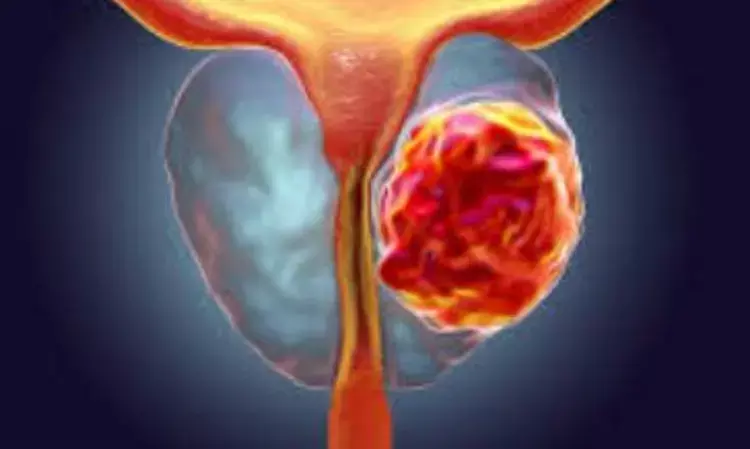- Home
- Medical news & Guidelines
- Anesthesiology
- Cardiology and CTVS
- Critical Care
- Dentistry
- Dermatology
- Diabetes and Endocrinology
- ENT
- Gastroenterology
- Medicine
- Nephrology
- Neurology
- Obstretics-Gynaecology
- Oncology
- Ophthalmology
- Orthopaedics
- Pediatrics-Neonatology
- Psychiatry
- Pulmonology
- Radiology
- Surgery
- Urology
- Laboratory Medicine
- Diet
- Nursing
- Paramedical
- Physiotherapy
- Health news
- Fact Check
- Bone Health Fact Check
- Brain Health Fact Check
- Cancer Related Fact Check
- Child Care Fact Check
- Dental and oral health fact check
- Diabetes and metabolic health fact check
- Diet and Nutrition Fact Check
- Eye and ENT Care Fact Check
- Fitness fact check
- Gut health fact check
- Heart health fact check
- Kidney health fact check
- Medical education fact check
- Men's health fact check
- Respiratory fact check
- Skin and hair care fact check
- Vaccine and Immunization fact check
- Women's health fact check
- AYUSH
- State News
- Andaman and Nicobar Islands
- Andhra Pradesh
- Arunachal Pradesh
- Assam
- Bihar
- Chandigarh
- Chattisgarh
- Dadra and Nagar Haveli
- Daman and Diu
- Delhi
- Goa
- Gujarat
- Haryana
- Himachal Pradesh
- Jammu & Kashmir
- Jharkhand
- Karnataka
- Kerala
- Ladakh
- Lakshadweep
- Madhya Pradesh
- Maharashtra
- Manipur
- Meghalaya
- Mizoram
- Nagaland
- Odisha
- Puducherry
- Punjab
- Rajasthan
- Sikkim
- Tamil Nadu
- Telangana
- Tripura
- Uttar Pradesh
- Uttrakhand
- West Bengal
- Medical Education
- Industry
Pelvic radiotherapy bests prostate only radiotherapy for disease free survival in prostate cancer

In a recently published research , it has been highlighted that Prophylactic pelvic irradiation for high-risk, locally advanced prostate cancer improved BFFS and DFS as compared with prostate-only radiotherapy (PORT), but OS did not appear to differ.
The research findings have been published in Journal of Clinical Oncology.
Researchers recently sought to address the longstanding question regarding the efficacy of prophylactic pelvic nodal irradiation in high-risk prostate cancer. The present trial incorporates the contemporary standards of staging, radiotherapy dose, technique, nodal volumes, and duration of androgen deprivation therapy.
As for the study design,this was phase III, single center, randomized controlled trial enrolled eligible patients undergoing radical radiotherapy for node-negative prostate adenocarcinoma, with estimated nodal risk ≥ 20%. Randomization was 1:1 to PORT (68 Gy/25# to prostate) or whole-pelvic radiotherapy (WPRT, 68 Gy/25# to prostate, 50 Gy/25# to pelvic nodes, including common iliac) using computerized stratified block randomization, stratified by Gleason score, type of androgen deprivation, prostate-specific antigen at diagnosis, and prior transurethral resection of the prostate.
All patients received image-guided, intensity-modulated radiotherapy and minimum 2 years of androgen deprivation therapy. The primary end point was 5-year biochemical failure-free survival (BFFS), and secondary end points were disease-free survival (DFS) and overall survival (OS).
Data analysis revealed the following facts.
- From November 2011 to August 2017, a total of 224 patients were randomly assigned (PORT = 114, WPRT = 110). At a median follow-up of 68 months, 36 biochemical failures (PORT = 25, WPRT = 7) and 24 deaths (PORT = 13, WPRT = 11) were recorded.
- Five-year BFFS was 95.0% (95% CI, 88.4 to 97.9) with WPRT versus 81.2% (95% CI, 71.6 to 87.8) with PORT, with an unadjusted hazard ratio (HR) of 0.23 (95% CI, 0.10 to 0.52; P < .0001).
- WPRT also showed higher 5-year DFS (89.5% v 77.2%; HR, 0.40; 95% CI, 0.22 to 0.73; P = .002), but 5-year OS did not appear to differ (92.5% v 90.8%; HR, 0.92; 95% CI, 0.41 to 2.05; P = .83).
- Distant metastasis-free survival was also higher with WPRT (95.9% v 89.2%; HR, 0.35; 95% CI, 0.15 to 0.82; P = .01).
- Benefit in BFFS and DFS was maintained across prognostic subgroups.
Observing the results, the research team noted that "Prophylactic pelvic radiotherapy resulted in significantly improved biochemical failure-free survival and disease-free survival as compared with prostate-only radiotherapy. Modest increase was observed in the incidence of grade ≥ 2 late genitourinary toxicity with pelvic radiotherapy, with low incidence of GI toxicity in both the arms."
Prophylactic pelvic radiotherapy resulted in significantly improved biochemical failure-free survival and disease-free survival as compared with prostate-only radiotherapy.
For the full article follow the link: 10.1200/JCO.20.03282
Primary source: Journal of Clinical Oncology
Dr Satabdi Saha (BDS, MDS) is a practicing pediatric dentist with a keen interest in new medical researches and updates. She has completed her BDS from North Bengal Dental College ,Darjeeling. Then she went on to secure an ALL INDIA NEET PG rank and completed her MDS from the first dental college in the country – Dr R. Ahmed Dental College and Hospital. She is currently attached to The Marwari Relief Society Hospital as a consultant along with private practice of 2 years. She has published scientific papers in national and international journals. Her strong passion of sharing knowledge with the medical fraternity has motivated her to be a part of Medical Dialogues.
Dr Kamal Kant Kohli-MBBS, DTCD- a chest specialist with more than 30 years of practice and a flair for writing clinical articles, Dr Kamal Kant Kohli joined Medical Dialogues as a Chief Editor of Medical News. Besides writing articles, as an editor, he proofreads and verifies all the medical content published on Medical Dialogues including those coming from journals, studies,medical conferences,guidelines etc. Email: drkohli@medicaldialogues.in. Contact no. 011-43720751


